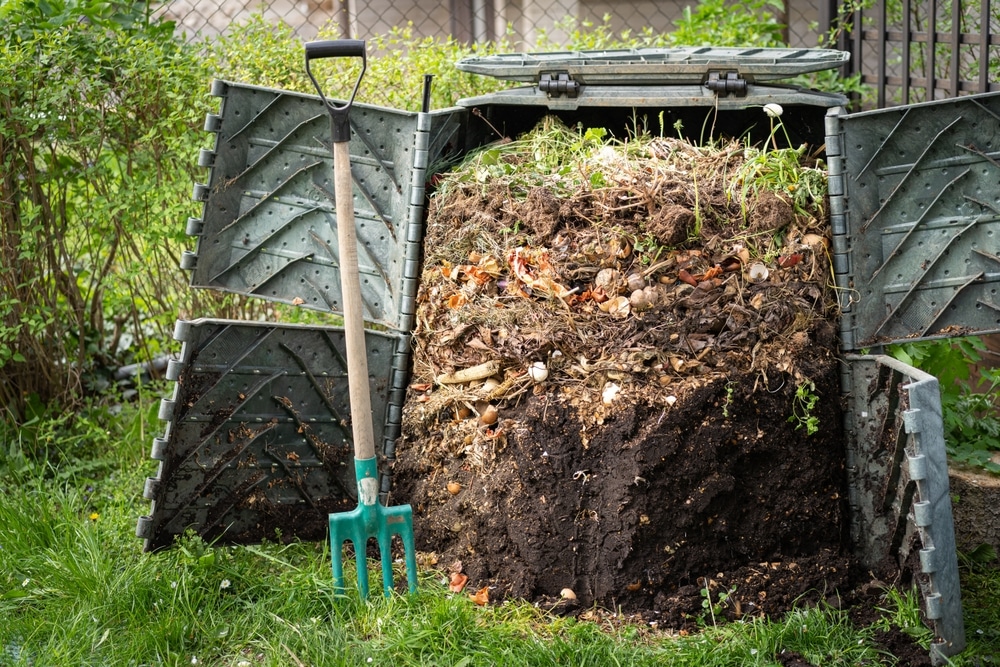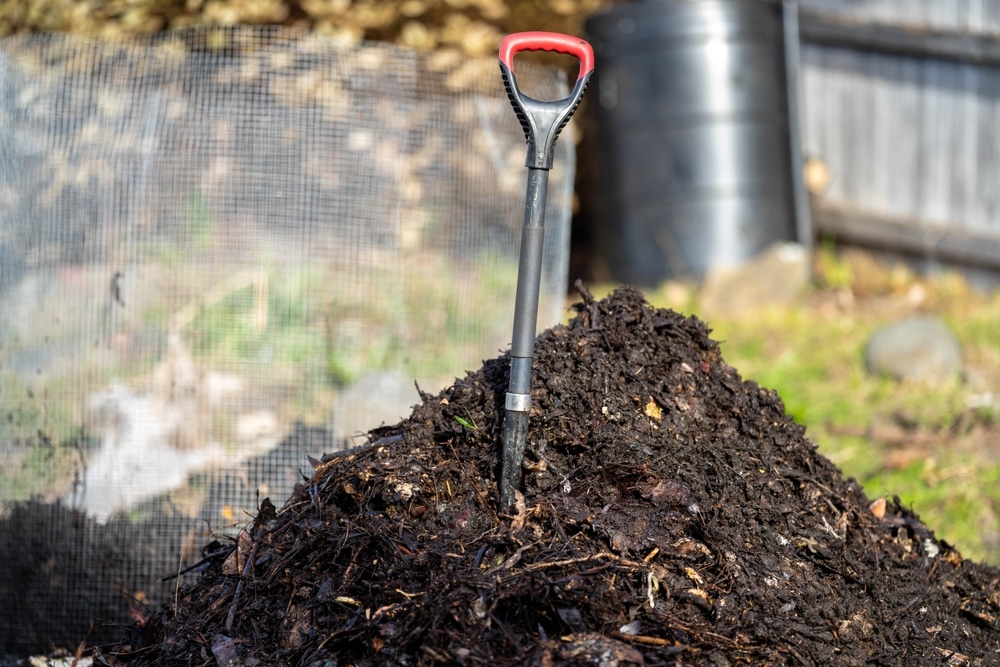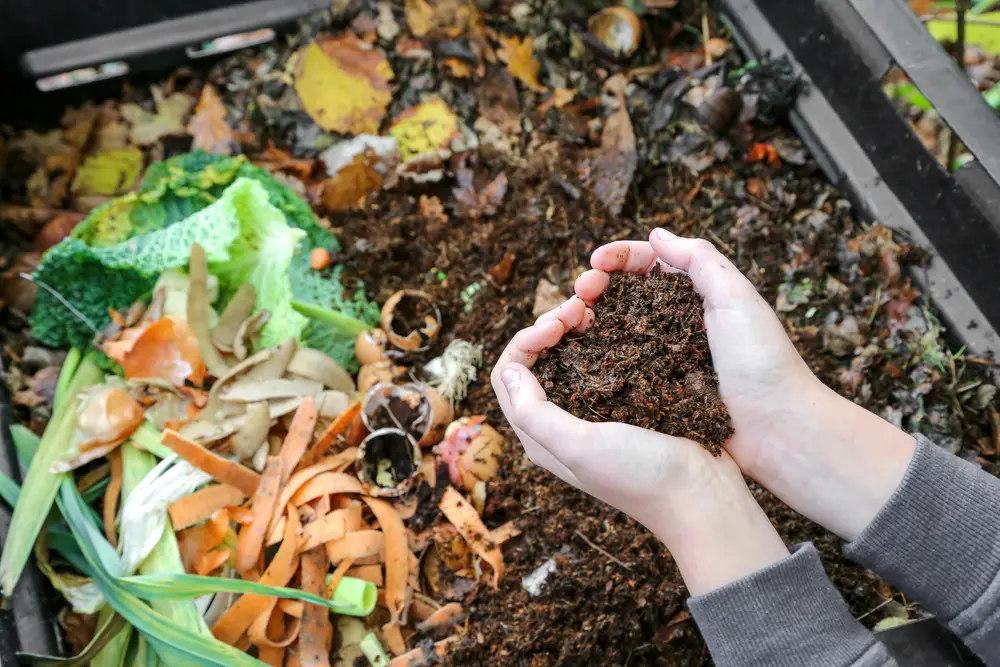Summary
The ideal greens-to-browns ratio for compost depends on whether you’re hot or cold composting. Hot composting is faster, and you’ll need to turn it regularly while checking its moisture levels. It requires a 1:2-3 green-to-brown ratio. Cold composting requires building it up over time, sometimes taking two years to break down fully. In this case, the ideal green-to-brown ratio is 1:1.
When composting in your backyard, you’ll be adding a mix of “brown” materials (supply carbon, C) and “green” materials (supply nitrogen, N). Microorganisms that break down all the materials into a final product you can use in your garden need both.
Brown materials include small woody twigs, wood chips, dead leaves, straw, sawdust, or shredded newspaper.
Green materials include fresh grass and plant clippings, fruits, vegetable peelings, or tea bags.
It’s essential to add browns and greens to your compost pile in the correct ratio for efficient decomposition to take place.
Here’s what that ratio is.
What Is The Ideal Greens-To-Browns Ratio For Compost?

Why Ratio Is Important
Brown materials are carbon (C) sources, while green materials add nitrogen (N). Microorganisms need both to do their decomposing work. To make their work as efficient as possible to create usable compost for you in less than a year, the greens-to-browns ratio for your compost (C:N) needs to be controlled.
How much C or N you add to the pile can affect the decomposition process. If you add too much C or N, you can interrupt the process or encounter problems with your compost pile.
There are also two types of composting: hot and cold. The difference is how long it takes for materials to break down and how much work you need to do to manage your compost pile. There’s an ideal brown-to-green ratio for each type.
You might come across references to a ratio of 30:1. This is BY WEIGHT of material added, which can be hard to figure out when greens are wet and heavy, and browns tend to be dry and fluffy. So, we’ll be using ratios BY VOLUME of material added, which is much easier to figure out by looking at what you’ve got.
Ratio For Hot Composting
Hot composting is a faster process and needs more maintenance, such as turning it regularly and checking that the moisture levels are right. The pile is built all at once, reaches higher temperatures, and materials can break down in as little as two to three months. The ideal ratio for this faster process is 2-3:1 browns (C) to greens (N) by volume. In other words, add twice to three times as much brown material as green.
Ratio For Cold Composting
Cold composting is a slower, simpler process and is more hands-off. The pile is built gradually, adding materials a little at a time, doesn’t heat up as much, and materials can take one to two years to break down completely. For this process, use a ratio of 1:1 browns to greens by volume. In other words, adding equal amounts of brown and green materials.
How To Blend Browns And Greens

Why A Blend Is Important
For decomposition to take place, there needs to be both carbon (C) and nitrogen (N) sources in a compost pile. To speed up the process, they need to be evenly blended without big pockets of just greens or browns.
Alternating The Layers Of Brown And Green
Add browns and greens in layers when adding materials to the compost pile. Put greens in a layer no more than 2” – 3” deep, then cover them with a thicker layer of brown materials. Always cover green materials, particularly kitchen scraps, with brown materials to reduce flies.
Signs Your Ratio Might Be Off
| What’s Wrong | Possible Cause | Solution |
| Pile is dry throughout | Not enough moisture; too much brown material | Moisten the pile a bit with a hose and turn the pile; add more green materials; use proper ratio of brown:green in future |
| Compost pile smells like rotten eggs | Too little air in the pile; pile too wet; Too many greens (N) added, not enough browns | Add more browns and mix the pile; use proper ratio of brown:green in future |
| Compost is slimy | Too much moisture; too many greens added (can happen especially with too many grass clippings all at once) | Add more brown materials and mix pile; use proper ratio of brown:green and mix well in future |
What You Can Add To Your Home Compost Pile
Greens
Greens are materials that add nitrogen (N) to the compost. They include:
- Kitchen scraps like fruit and vegetable peelings, tea bags, coffee grounds
- Grass clippings
- Fresh garden prunings
- Seaweed
Browns
Browns are materials that add carbon (C) to the pile. They include:
- Twigs
- Wood chips
- Dried dead leaves
- Shredded newspaper
- Straw/hay

